Eleocharis baldwinii
(Eleocharis translates loosely as “graceful marsh-dweller.” William Baldwin was an early American botanist active in Florida and several additional places.)
Cyperaceae (Sedges)
Despite the substantial size of the Sedge Family, we don’t munch many. Chufa flour is familiar to those who enjoy the Mexican beverage horchata, which to me evokes childhood memories of (nonchocolate) Ovaltine. Chufa is more familiar to Floridians as the pesky weed known locally as yellow nutsedge, Cyperus esculentus. “Esculentus,” meaning edible, is a clue to the past. Chufa’s culinary history stretches back 4000 years in Africa, especially Egypt. I can go behind my house and yank up a tasty snack King Tut enjoyed so long ago (but I won’t). Let’s just say, “when life gives you nutgrass, make horchata.”
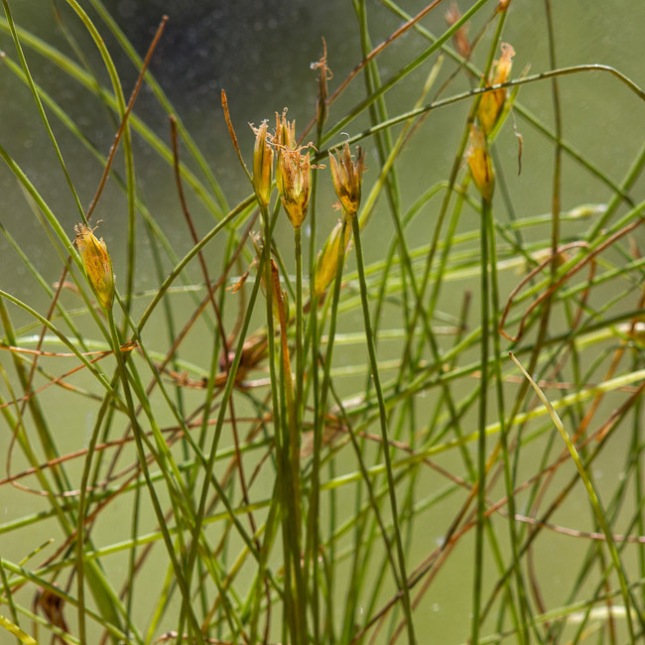
Baldwins Spikesedge, with flowery spikelets on vertical branch tips. By John Bradford.
Another foody sedge is the so-called water-chestnut, which has zero to do with chestnuts and much to do with Chinese cuisine. It is Eleocharis dulcis (dulcis = sweet), and is a segue into today’s continued exploration with John of the Kiplinger Natural Area in Stuart, Florida. We ate no Eleocharis, but we tread upon it, Eleocharis baldwinii that is.
This little spikesedge has at least 3 fun features:
Fun feature 1. Although most of the flower clusters (spikelets) are elevated like spear tips atop vertical stems, some strictly female spikelets sit directly at ground level. In a wind-pollinated species, those lowdown flowers out of the breeze are tough to explain, and why female? Here is a completely untested notion: most of the raised spikelets pass on to an odd fate described below. So maybe the shorties escape destiny and can catch wind-borne pollen sifting down from above, assuring some “normal” pollination.
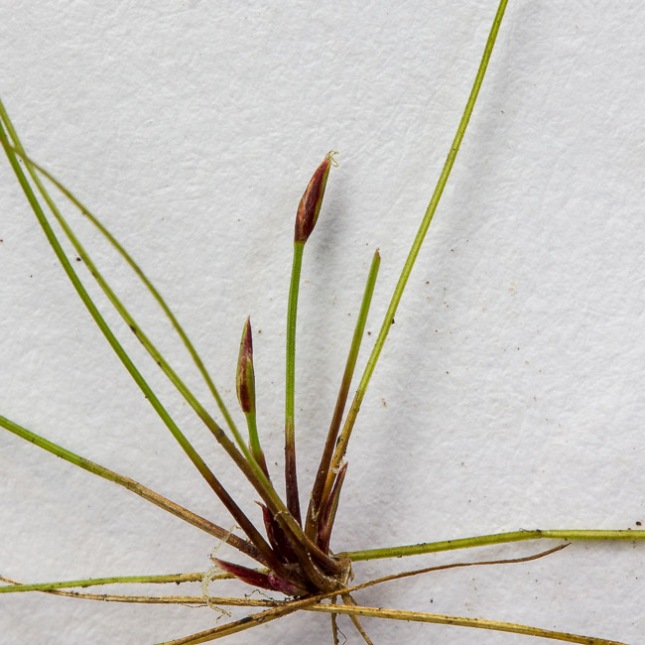
Female (seed forming) spikelets remain at ground level. By JB
Fun feature 2. This species is amphibious. It can grow lushly on moist soil or can live submerged, even fairly deep. In water it becomes stringy resembling an imaginary seaweed. Submersion spreads seeds and drowns terrestrial competitors. Emersion snuffs aquatic competitors. Life is good.
Fun feature 3. Our species forms monospecific lawns in disturbed moist places, loving paths and dirt roads, weed-free.
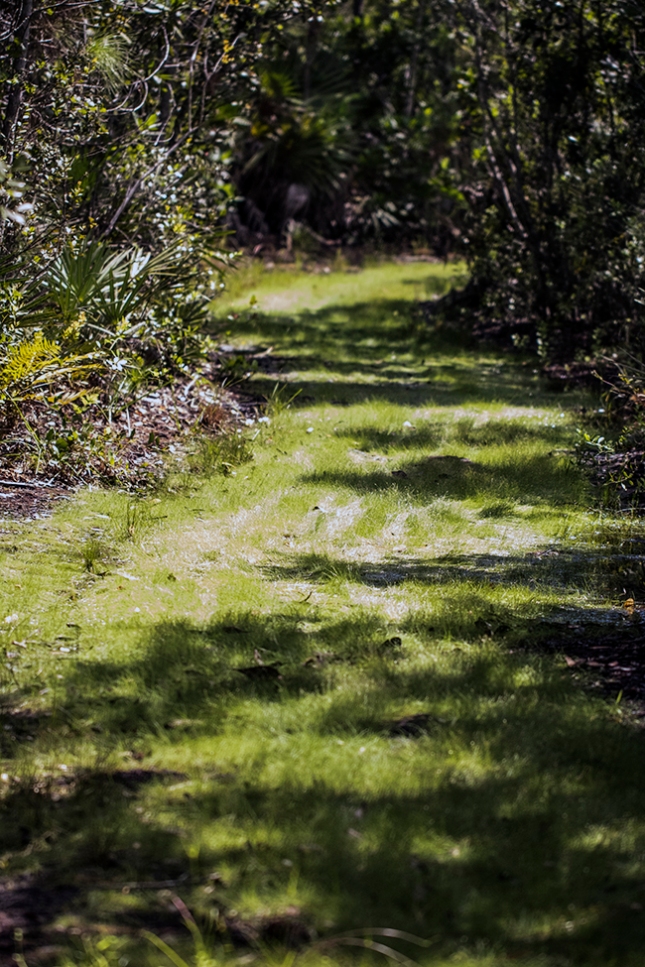
Baldwin’s spikesedge-covered path in Kiplinger today. Where are the other-species weeds?
How does it spread? Well, there are seeds (technically achenes) dispersed in water and birds. And, more interestingly, the species is “viviparous.” That is, the spikelet-bearing upright stems elongate until they flop over back to the ground by their own weight. (Gardeners have seen the same in “walking iris” and similar in “spider-plant.”)
When the tip of the spikelet strikes the earth it spawns a new baby plantlet, thus this species “walks” across the mud. Some of that growth may come from seeds germinating in the spikelet touching the soil, but I suspect the sproutage to be unrelated to the seeds, or a mix.
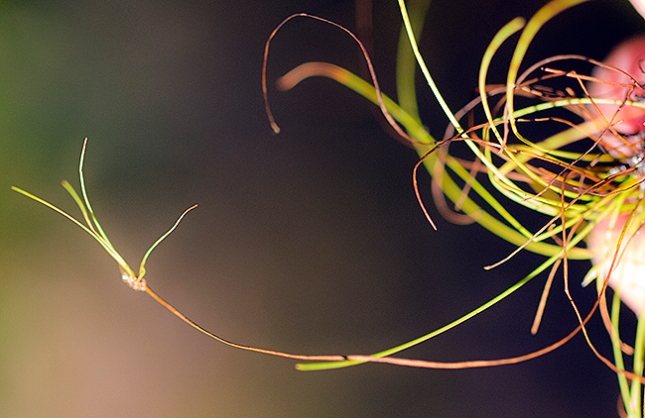
Baby on a wand. The wand is a stem that got elongate, bent to the ground, and sprouted that baby.
Walking helps explain how the plant spreads, but any suburbanite with a St. Augustine spread would envy the spikesedge’s freedom from weeds. How does it do that? Answer: it makes its own herbicide.
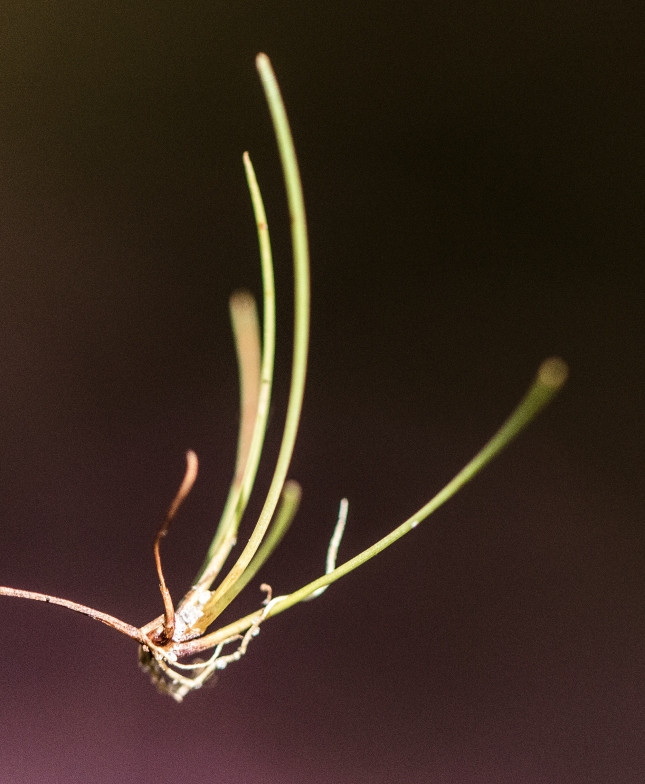
Baby portrait
Earlier botanists noticed how species of spikesedges hold forth in pure colonies, generating a history of research leading to a natural weed-whacker called dihydroactinidiolide. Spikesedges squelch “the other” sufficiently to generate interest in connection with aquatic weed control.